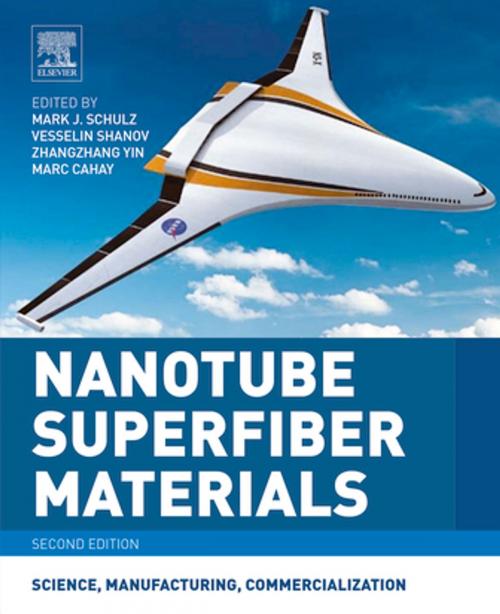Nanotube Superfiber Materials
Science, Manufacturing, Commercialization
Nonfiction, Science & Nature, Science, Other Sciences, Nanostructures, Technology, Material Science| Author: | ISBN: | 9780128126950 | |
| Publisher: | Elsevier Science | Publication: | March 12, 2019 |
| Imprint: | William Andrew | Language: | English |
| Author: | |
| ISBN: | 9780128126950 |
| Publisher: | Elsevier Science |
| Publication: | March 12, 2019 |
| Imprint: | William Andrew |
| Language: | English |
Nanotube Superfiber Materials: Science, Manufacturing, Commercialization, Second Edition, helps engineers and entrepreneurs understand the science behind the unique properties of nanotube fiber materials, how to efficiency and safely produce them, and how to transition them into commercial products. Each chapter gives an account of the basic science, manufacturing, properties and commercial potential of a specific nanotube material form and its application. New discoveries and technologies are explained, along with experiences in handing-off the improved materials to industry. This book spans nano-science, nano-manufacturing, and the commercialization of nanotube superfiber materials. As such, it opens up the vast commercial potential of nanotube superfiber materials.
Applications for nanotube superfiber materials cut across most of the fields of engineering, including spacecraft, automobiles, drones, hyperloop tracks, water and air filters, infrastructure, wind energy, composites, and medicine where nanotube materials enable development of tiny machines that can work inside our bodies to diagnose and treat disease.
- Provides up to date information on the applications of nanotube fiber materials
- Explores both the manufacturing and commercialization of nanotube superfibers
- Sets out the processes for producing macro-scale materials from carbon nanotubes
- Describes the unique properties of these materials
Nanotube Superfiber Materials: Science, Manufacturing, Commercialization, Second Edition, helps engineers and entrepreneurs understand the science behind the unique properties of nanotube fiber materials, how to efficiency and safely produce them, and how to transition them into commercial products. Each chapter gives an account of the basic science, manufacturing, properties and commercial potential of a specific nanotube material form and its application. New discoveries and technologies are explained, along with experiences in handing-off the improved materials to industry. This book spans nano-science, nano-manufacturing, and the commercialization of nanotube superfiber materials. As such, it opens up the vast commercial potential of nanotube superfiber materials.
Applications for nanotube superfiber materials cut across most of the fields of engineering, including spacecraft, automobiles, drones, hyperloop tracks, water and air filters, infrastructure, wind energy, composites, and medicine where nanotube materials enable development of tiny machines that can work inside our bodies to diagnose and treat disease.
- Provides up to date information on the applications of nanotube fiber materials
- Explores both the manufacturing and commercialization of nanotube superfibers
- Sets out the processes for producing macro-scale materials from carbon nanotubes
- Describes the unique properties of these materials















